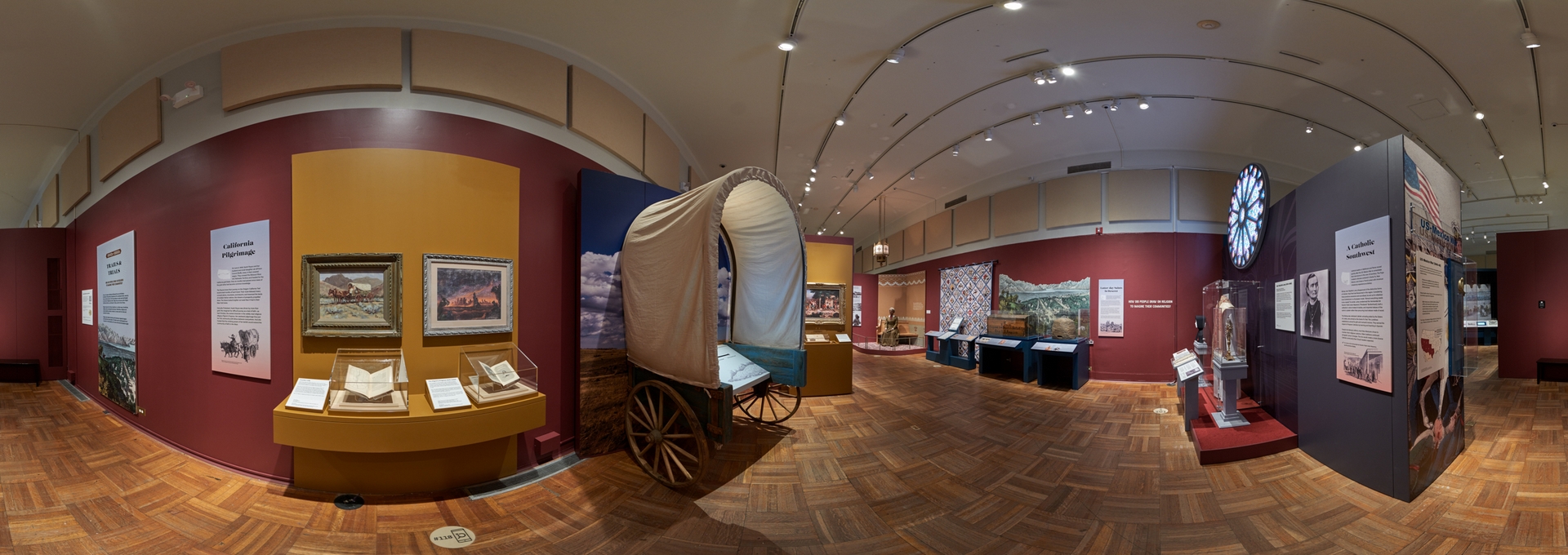




Frontier Lady
Sarah Royce filled her
“pilgrimage diary” with accounts of her family’s persistence despite the difficulties
of the trail. Her religious upbringing had taught her to profess these trials
and to rejoice when her faith prevailed or her prayers were answered.
Years later, for the benefit
of her son, Royce turned her diary into memoirs. Her vivid scenes evoke The Pilgrim’s Progress—John Bunyan’s
17th-century tale about faith and salvation. She modeled herself after
Christian and Christiana, the resilient characters whose faith overcomes many
dangerous trials on their separate pilgrimages to heavenly reward in the
Celestial City. In Royce’s time, The
Pilgrim’s Progress served as a moral compass for Christians around the
world.
Both The Pilgrim’s Progress and Royce’s A Frontier Lady are still in print.
The Pilgrim’s Progress (1678–today)
The moral lessons of John
Bunyan’s book The Pilgrim’s Progress were amplified in popular culture. In 1850, the Moving Panorama of Pilgrim’s Progress opened in Manhattan. It
featured 800 feet of painted scenes capturing the book’s highlights. Visitors
thrilled at the spectacle as giant, rotating images visualized a story most
knew so well.
New York artist Frederic
Edwin Church contributed the scene shown here. It evokes the biblical passage,
“Even though I walk through the valley of the shadow of death, I will fear no
evil, for You are with me; Your rod and Your staff, they comfort me.”
Other well-known American
artists also took part, including Jasper Cropsey and Daniel Huntington. A
touring version of the panorama traveled for 15 years to audiences from New
York to Detroit. It still exists in the collection of Maine’s Saco Museum.
Sunday Morning in the Mines
Charles Christian Nahl’s
painting shows an all-male white world split between devout Bible readers and
debauched revelers. The real world that Sarah encountered in California was far
more complex. But the scenes capture the hopes and fears that animated
evangelical Protestants and drove their proselytizing missions.
“Never was there a better
opportunity for demonstrating the power of Christian principle,” Sarah wrote, “and
never were there more temptations to laxity of conduct.”
Gold lust also drove racial
violence, particularly by whites against the Indigenous peoples of California.
The state-sanctioned violence and mistreatment was so extreme it has been
termed genocide. Between 1846 and 1870, the Native population in California
dropped from perhaps 150,000 to 30,000.
Gold Country, California
The Royces arrived in
California in October 1849. That same year, up to 25,000 fellow Americans and
75,000 migrants from South America, Europe, and Asia also made the journey.
The Royce family commenced
their California life by operating a “store” for prospectors out of a large
tent. Their customers paid mainly in gold dust, whose value Sarah calculated
using a gold scale and weights.
In 1850, the Royces were in
San Francisco when the Oregon steamed
into the harbor announcing California statehood with waving streamers and
flags. Sarah recounted the excited talk of the crowds in her journal: “Now we
are at home again. No more talk of going to ‘The States’ nor hearing from ‘The
States.’ We are in ‘The States!’”